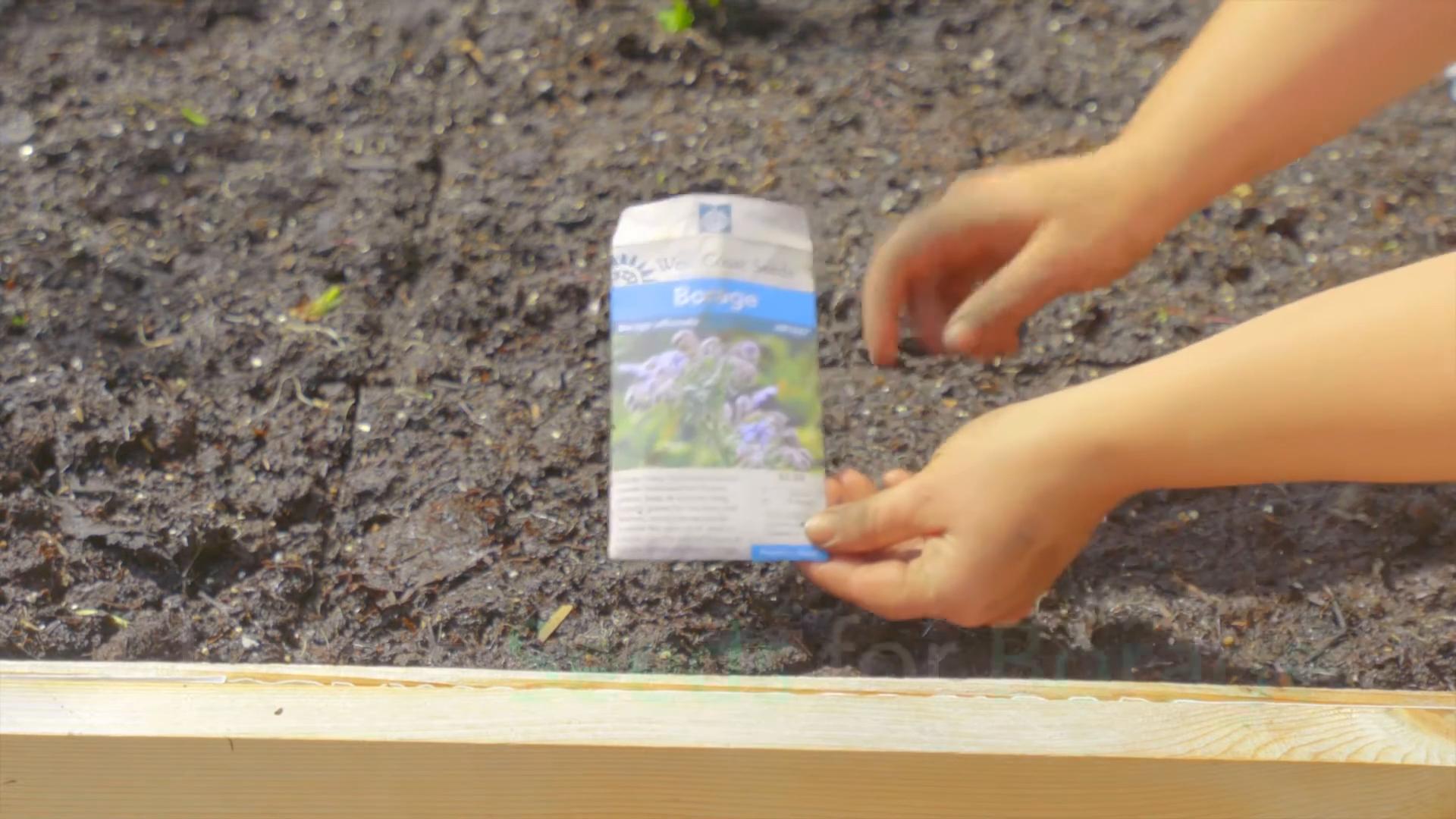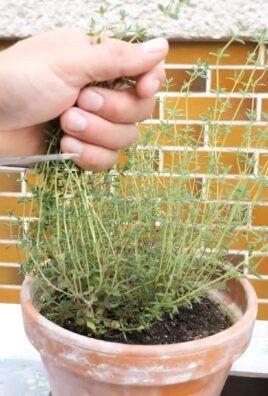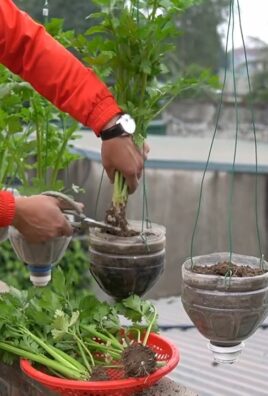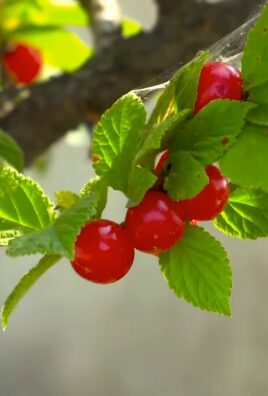Grow Borage Easily and unlock a world of vibrant blue blooms and culinary possibilities right in your backyard! Have you ever dreamt of adding a touch of the Mediterranean to your garden, a splash of color that’s not only beautiful but also incredibly useful? Well, dream no more! This DIY guide is your passport to successfully cultivating this amazing herb, even if you’re a complete beginner.
Borage, also known as starflower, boasts a rich history, dating back to ancient times. The Romans believed it brought courage, while medieval knights embroidered borage flowers on their scarves before tournaments. Beyond its historical charm, borage is a powerhouse of benefits. Its leaves and flowers are edible, offering a refreshing cucumber-like flavor to salads and drinks. Plus, it’s a fantastic companion plant, attracting pollinators and deterring pests – a true win-win for any garden!
But why should you learn to grow borage easily? In today’s world, where we’re increasingly conscious of what we consume and where it comes from, having fresh, homegrown herbs is a real game-changer. Borage is incredibly easy to care for, thriving in various conditions and requiring minimal effort. Imagine stepping outside your door to snip a few vibrant blue flowers for your summer lemonade or adding a peppery kick to your favorite salad. This DIY guide will equip you with all the knowledge and simple tricks you need to transform your garden into a borage haven. Let’s get started!

Growing Borage: A Beginner’s Guide to This Bee-Loving Herb
Hey there, fellow garden enthusiasts! I’m so excited to share my experience with growing borage. This beautiful herb, also known as starflower, is a fantastic addition to any garden. Not only does it attract pollinators like bees (which is a huge win!), but it also has edible flowers and leaves. Trust me, once you get the hang of it, you’ll be enjoying borage in salads, teas, and even as a garnish. Let’s dive into how you can easily grow borage in your own backyard!
Why Grow Borage?
Before we get started, let’s quickly touch on why borage is such a great plant to have around:
* Attracts Pollinators: Bees absolutely adore borage, making it a must-have for any pollinator-friendly garden.
* Edible Flowers and Leaves: The flowers have a mild cucumber-like flavor, perfect for salads and drinks. The leaves can also be eaten, though they’re best when young and tender.
* Easy to Grow: Borage is a relatively low-maintenance plant, making it perfect for beginner gardeners.
* Self-Seeding: Once you have borage in your garden, it will likely self-seed, meaning you’ll have new plants popping up each year.
* Soil Improvement: Borage is known to improve soil health by accumulating minerals.
Getting Started: What You’ll Need
Before you start planting, gather these essential supplies:
* Borage Seeds: You can find these at most garden centers or online.
* Well-Draining Soil: Borage isn’t too picky, but it prefers well-draining soil.
* Sunny Location: Borage thrives in full sun, but it can tolerate partial shade.
* Watering Can or Hose: For keeping your borage plants hydrated.
* Gardening Gloves: To protect your hands.
* Optional: Compost or Organic Fertilizer: To enrich the soil.
Step-by-Step Guide to Growing Borage
Now, let’s get our hands dirty! Here’s a detailed guide on how to grow borage from seed:
1. Choosing the Right Time to Plant
The best time to plant borage is in the spring, after the last frost. You can also start seeds indoors a few weeks before the last frost to get a head start. In warmer climates, you can plant borage in the fall for a winter crop. I usually aim for late April or early May in my area.
2. Starting Seeds Indoors (Optional)
If you want to get a jump start on the growing season, you can start borage seeds indoors. Here’s how:
1. Prepare Seed Trays or Pots: Fill seed trays or small pots with a seed-starting mix.
2. Sow the Seeds: Plant the seeds about 1/2 inch deep in the soil. I usually put 2-3 seeds in each cell or pot to increase the chances of germination.
3. Water Gently: Water the soil gently to moisten it, being careful not to dislodge the seeds.
4. Provide Light: Place the seed trays or pots in a sunny location or under grow lights. Borage seeds need light to germinate.
5. Keep Moist: Keep the soil consistently moist but not waterlogged.
6. Germination: The seeds should germinate in about 7-14 days.
7. Thin Seedlings: Once the seedlings have a few true leaves, thin them out, leaving only the strongest seedling in each cell or pot.
3. Direct Sowing Outdoors
Direct sowing is the easiest way to plant borage, and it’s what I usually do. Here’s how:
1. Prepare the Soil: Choose a sunny spot in your garden and prepare the soil by loosening it with a garden fork or tiller. Remove any weeds or rocks.
2. Amend the Soil (Optional): If your soil is poor, you can amend it with compost or organic fertilizer to improve its fertility and drainage.
3. Sow the Seeds: Sow the seeds about 1/2 inch deep and 6-12 inches apart. I like to create shallow furrows in the soil and then sprinkle the seeds along the furrows.
4. Cover the Seeds: Gently cover the seeds with soil.
5. Water Gently: Water the soil gently to moisten it, being careful not to wash away the seeds.
6. Mark the Area: Mark the area where you planted the seeds so you don’t accidentally disturb them.
4. Caring for Your Borage Plants
Once your borage plants have sprouted, here’s how to care for them:
1. Watering: Water your borage plants regularly, especially during dry periods. Borage prefers consistently moist soil, but avoid overwatering, which can lead to root rot. I usually water deeply once or twice a week, depending on the weather.
2. Weeding: Keep the area around your borage plants free of weeds. Weeds can compete with your borage plants for nutrients and water.
3. Fertilizing (Optional): If your soil is poor, you can fertilize your borage plants with a balanced organic fertilizer. However, borage is not a heavy feeder, so you don’t need to fertilize it too often.
4. Mulching (Optional): Mulching around your borage plants can help to retain moisture in the soil, suppress weeds, and regulate soil temperature. I like to use straw or wood chips as mulch.
5. Pest Control: Borage is generally pest-resistant, but it can sometimes be affected by aphids or spider mites. If you notice any pests, you can spray your plants with insecticidal soap or neem oil.
6. Deadheading: To encourage more blooms, deadhead spent flowers regularly. This will also prevent the plants from self-seeding too aggressively.
5. Harvesting Borage
You can start harvesting borage flowers and leaves as soon as the plants are large enough. Here’s how:
1. Harvesting Flowers: Pick the flowers when they are fully open. The flowers are best used fresh, but you can also dry them for later use.
2. Harvesting Leaves: Harvest the leaves when they are young and tender. Older leaves can be a bit hairy and tough. Use scissors or a knife to cut the leaves from the plant.
3. Using Borage: Add the flowers to salads, drinks, or use them as a garnish. The leaves can be added to salads, soups, or stews. You can also use borage to make tea.
Troubleshooting Common Borage Problems
Even with the best care, you might encounter a few problems when growing borage. Here are some common issues and how to address them:
* Leggy Plants: If your borage plants are leggy (tall and spindly), it could be due to insufficient sunlight. Move the plants to a sunnier location or provide supplemental lighting.
* Yellowing Leaves: Yellowing leaves can be a sign of overwatering or nutrient deficiency. Make sure the soil is well-draining and consider fertilizing your plants with a balanced organic fertilizer.
* Pest Infestations: Keep an eye out for aphids, spider mites, and other pests. Treat infestations with insecticidal soap or neem oil.
* Powdery Mildew: Powdery mildew is a fungal disease that can affect borage plants, especially in humid conditions. Improve air circulation around your plants and avoid overhead watering. You can also treat powdery mildew with a fungicide.
Encouraging Self-Seeding (If Desired)
Borage is a prolific self-seeder, which means it will readily drop its seeds and produce new plants the following year. If you want to encourage self-seeding, simply allow some of the flowers to mature and dry on the plant. The seeds will then drop to the ground and germinate in the spring. However, be aware that borage can become quite invasive if you allow it to self-seed too freely. If you don’t want it to spread too much, deadhead the flowers regularly to prevent seed production.
Borage Varieties
While the common borage (Borago officinalis) is the most widely grown variety, there are a few other types you might want to consider:
* Alba: This variety produces white flowers instead of the traditional blue.
* Variegata: This variety has variegated leaves, adding visual interest to your garden.
Tips and Tricks for Growing Borage
Here are a few extra tips and tricks to help you grow borage successfully:
* Succession Planting: To ensure a continuous supply of borage flowers and leaves, sow seeds every few weeks throughout the growing season.
* Companion Planting: Borage is a great companion plant for tomatoes,

Conclusion
So, there you have it! Growing borage easily, right in your own backyard (or even on your balcony!), is not only achievable but incredibly rewarding. We’ve walked through the simple steps, debunked common myths, and armed you with the knowledge to cultivate this beautiful and useful herb.
Why is this DIY trick a must-try? Because borage is more than just a pretty face. It’s a powerhouse of benefits for your garden and your well-being. Imagine attracting pollinators like bees and butterflies, creating a vibrant ecosystem right outside your door. Think of the delicious and unique culinary possibilities, from adding a cucumber-like flavor to your salads to garnishing your summer drinks with its stunning blue flowers. And consider the soil-enriching properties that borage brings, naturally improving the health of your garden.
But the benefits don’t stop there. Borage is also incredibly low-maintenance, making it perfect for beginner gardeners or those with busy schedules. It’s a resilient plant that can tolerate a range of conditions, and once established, it practically takes care of itself. Plus, the satisfaction of growing your own herbs and flowers is simply unmatched. There’s something truly special about nurturing a plant from seed to bloom and then harvesting its bounty.
Looking for variations? Absolutely! Try companion planting borage with tomatoes, strawberries, or squash to deter pests and improve their growth. Experiment with different soil types to see what works best in your area. Consider growing borage in containers if you have limited space. You can even dry the flowers and leaves for use in teas or potpourris. The possibilities are endless!
We encourage you to take the plunge and try growing borage easily. Don’t be intimidated by the thought of gardening. This is a simple and straightforward project that anyone can accomplish. Start small, follow the steps we’ve outlined, and watch your borage plants thrive.
And most importantly, share your experience with us! We’d love to hear about your successes, your challenges, and any tips or tricks you discover along the way. Post photos of your borage plants on social media, tag us in your posts, and let’s create a community of borage enthusiasts. Together, we can spread the word about this amazing herb and inspire others to embrace the joys of gardening. So get out there, get your hands dirty, and start growing borage today! You won’t regret it.
Frequently Asked Questions (FAQ)
What is borage and why should I grow it?
Borage (Borago officinalis) is an annual herb known for its beautiful blue, star-shaped flowers and cucumber-like flavor. It’s a fantastic addition to any garden because it attracts pollinators, deters pests, improves soil health, and offers culinary uses. The flowers and leaves are edible and can be used in salads, drinks, and other dishes. Plus, it’s relatively easy to grow, making it a great choice for beginner gardeners.
When is the best time to plant borage?
The best time to plant borage is in the spring, after the last frost. You can also start seeds indoors a few weeks before the last frost and transplant them outdoors once the weather warms up. In warmer climates, you can also plant borage in the fall for a winter crop.
What kind of soil does borage need?
Borage is not particularly picky about soil, but it prefers well-drained soil that is rich in organic matter. It can tolerate a range of soil pH levels, but a slightly acidic to neutral pH is ideal. Amend your soil with compost or other organic matter before planting to improve its fertility and drainage.
How much sunlight does borage need?
Borage thrives in full sun, which means at least six hours of direct sunlight per day. However, it can also tolerate partial shade, especially in hotter climates. If you’re growing borage in a container, make sure to place it in a sunny location.
How often should I water borage?
Borage needs regular watering, especially during dry periods. Water deeply whenever the top inch of soil feels dry to the touch. Avoid overwatering, as this can lead to root rot. Once established, borage is relatively drought-tolerant.
Does borage need fertilizer?
Borage doesn’t typically need a lot of fertilizer, especially if you’ve amended your soil with compost or other organic matter. However, you can give it a boost with a balanced fertilizer or compost tea a few weeks after planting. Avoid over-fertilizing, as this can lead to excessive foliage growth at the expense of flowers.
How do I harvest borage?
You can harvest borage leaves and flowers as needed throughout the growing season. Pick the leaves when they are young and tender, as they can become prickly as they mature. Harvest the flowers when they are fully open. Simply snip the leaves or flowers from the plant with scissors or your fingers.
Is borage invasive?
Borage can self-seed readily, so it can become somewhat invasive in some gardens. To prevent it from spreading too much, you can deadhead the flowers before they go to seed. You can also collect the seeds and save them for planting next year.
Can I grow borage in a container?
Yes, borage can be grown in a container. Choose a pot that is at least 12 inches in diameter and fill it with well-draining potting mix. Make sure the container has drainage holes to prevent waterlogging. Place the container in a sunny location and water regularly.
Are there any pests or diseases that affect borage?
Borage is generally resistant to pests and diseases. However, it can be susceptible to aphids, spider mites, and powdery mildew. To prevent these problems, keep your plants healthy and well-ventilated. If you notice any pests or diseases, treat them promptly with an appropriate organic insecticide or fungicide.
What are some culinary uses for borage?
Borage leaves and flowers have a mild, cucumber-like flavor that makes them a versatile addition to many dishes. The leaves can be used in salads, soups, and stews. The flowers can be used to garnish drinks, salads, and desserts. They can also be candied or frozen in ice cubes.
Is borage safe to eat?
Borage is generally considered safe to eat in moderation. However, it contains small amounts of pyrrolizidine alkaloids (PAs), which can be toxic to the liver if consumed in large quantities over a long period of time. It’s best to avoid consuming large amounts of borage on a regular basis, especially if you have liver problems. Pregnant and breastfeeding women should also avoid consuming borage.
How can I dry borage flowers and leaves?
To dry borage flowers and leaves, spread them out on a screen or tray in a cool, dry, and well-ventilated place. You can also hang them upside down in small bunches. Allow them to dry completely, which may take several days or weeks. Once they are dry, store them in an airtight container in a cool, dark place.
What are the health benefits of borage?
Borage oil, extracted from the seeds, is rich in gamma-linolenic acid (GLA), an omega-6 fatty acid that has anti-inflammatory properties. Borage oil is sometimes used to treat skin conditions such as eczema and psoriasis. However, more research is needed to confirm its effectiveness. The leaves and flowers also contain antioxidants and other beneficial compounds.
Where can I buy borage seeds?
Borage seeds are widely available online and at garden centers. Look for reputable seed suppliers that offer high-quality seeds. You can also save seeds from your own borage plants to plant next year.




Leave a Comment